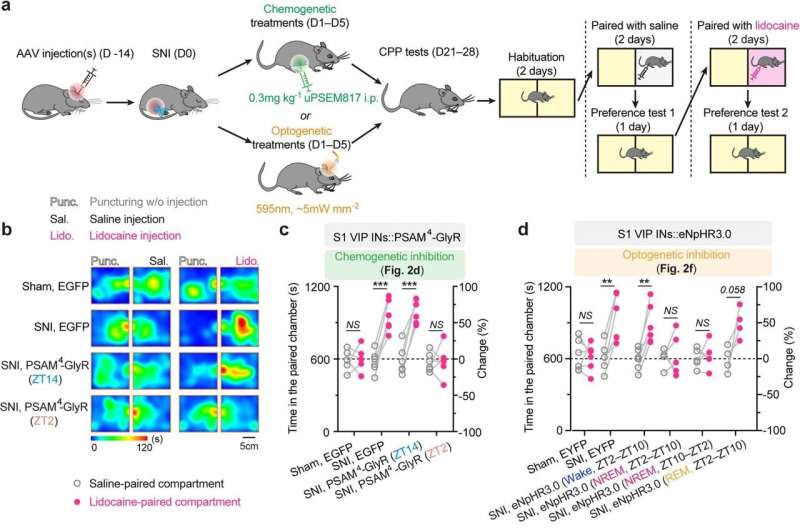#Link found between chronic pain and overactive pyramidal neurons during sleep

Table of Contents
“Link found between chronic pain and overactive pyramidal neurons during sleep”

A team of neuroscientists at the New York University School of Medicine has found a link between chronic pain and overactive pyramidal neurons during sleep periods. In their study, published in the journal Nature Neuroscience, the group conducted experiments with injured mice experiencing chronic pain.
Prior research has shown that there is often a link between chronic pain and insomnia. After experiencing a neural injury of some sort, many patients are left with some degree of lasting pain. This tends to result in poor sleep and sometimes insomnia. Once that happens, the pain becomes worse, and over time becomes chronic. But why this happens has been a mystery. In this new effort, the team in New York conducted experiments with mice hoping to find the answer.
The work involved inducing chronic pain in mice by damaging two of the three branches that make up a group of sciatic nerves. Doing so led to skin sensitivity in the legs. The researchers scanned the brains of each of the mice before and after the damage. They observed that pyramidal neurons in the part of the cerebral cortex responsible for sensation processing in the skin became more active. And over the course of several weeks, the activity increased, peaking during non-REM sleep.
Additionally, the researchers found that the increased activity in the neurons was being controlled by the anterior nucleus basalis, which is located in a front portion of the brain—it, too, became more active after the injury. This sent chemical signals to the pyramidal neurons, pushing them into an overexcited state. This led to increased skin sensitivity in the mice and more pain. Blocking the activity of the anterior nucleus basalis resulted in reduction in sensitivity and pain.
It is not yet known if chronic pain works the same in humans, but the team plans to carry on their work to find out—they also have begun work to find out if other types of chronic pain work the same way in mice.
More information:
Hang Zhou et al, A sleep-active basalocortical pathway crucial for generation and maintenance of chronic pain, Nature Neuroscience (2023). DOI: 10.1038/s41593-022-01250-y
© 2023 Science X Network
Citation:
Link found between chronic pain and overactive pyramidal neurons during sleep (2023, February 9)
retrieved 9 February 2023
from https://medicalxpress.com/news/2023-02-link-chronic-pain-overactive-pyramidal.html
This document is subject to copyright. Apart from any fair dealing for the purpose of private study or research, no
part may be reproduced without the written permission. The content is provided for information purposes only.
If you liked the article, do not forget to share it with your friends. Follow us on Google News too, click on the star and choose us from your favorites.
For forums sites go to Forum.BuradaBiliyorum.Com
If you want to read more Like this articles, you can visit our Science category.


